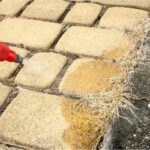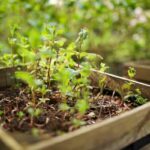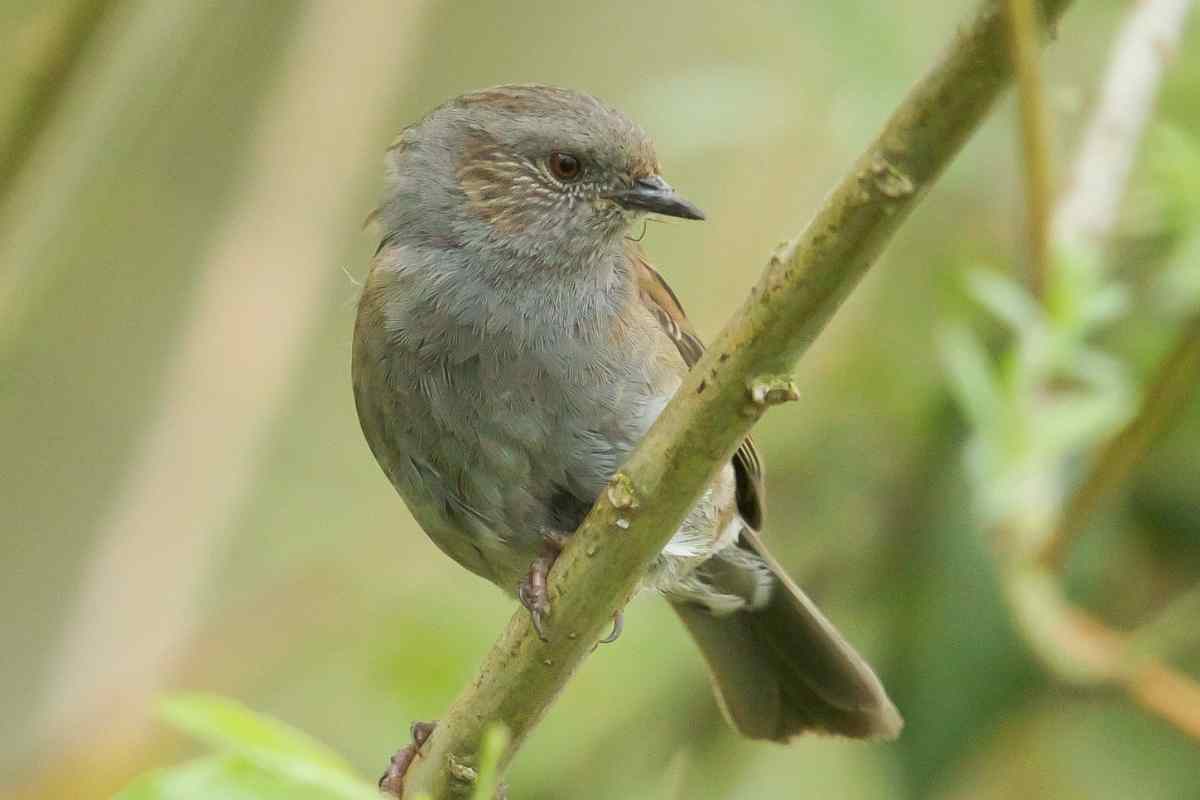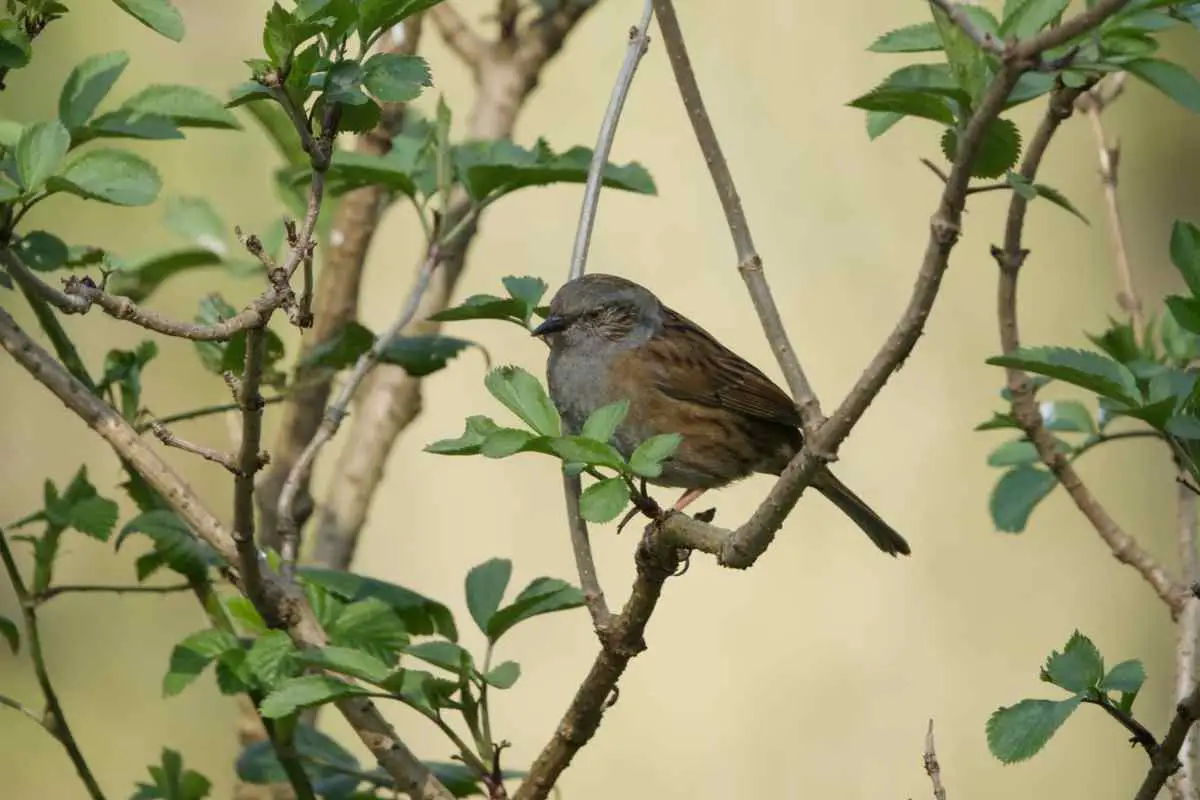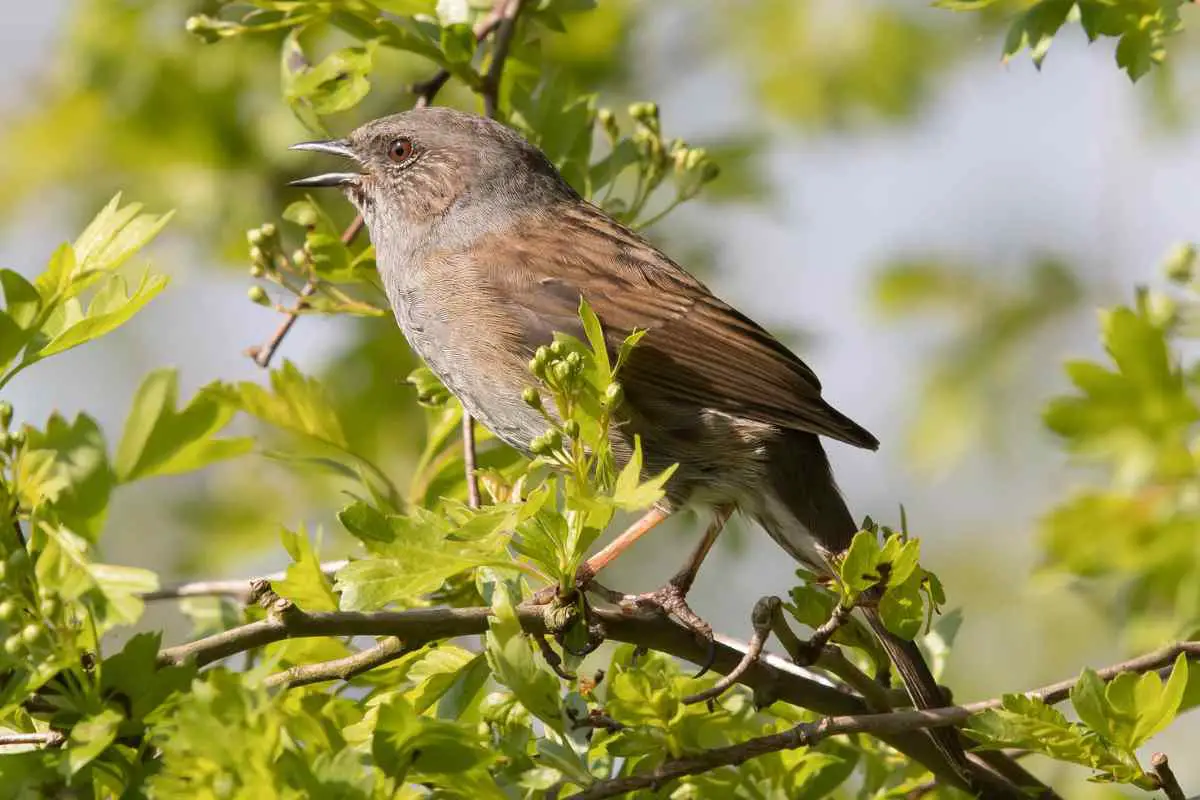There are many different types of butterflies that you may find in your garden, such as:
Red admiral, Peacock, Small tortoiseshell, Painted lady, Small white, Large white, Green-veined white, Orange-tip, Small copper, Meadow brown, Holly blue, Common blue
Learn more about the types of butterflies found in small gardens below.
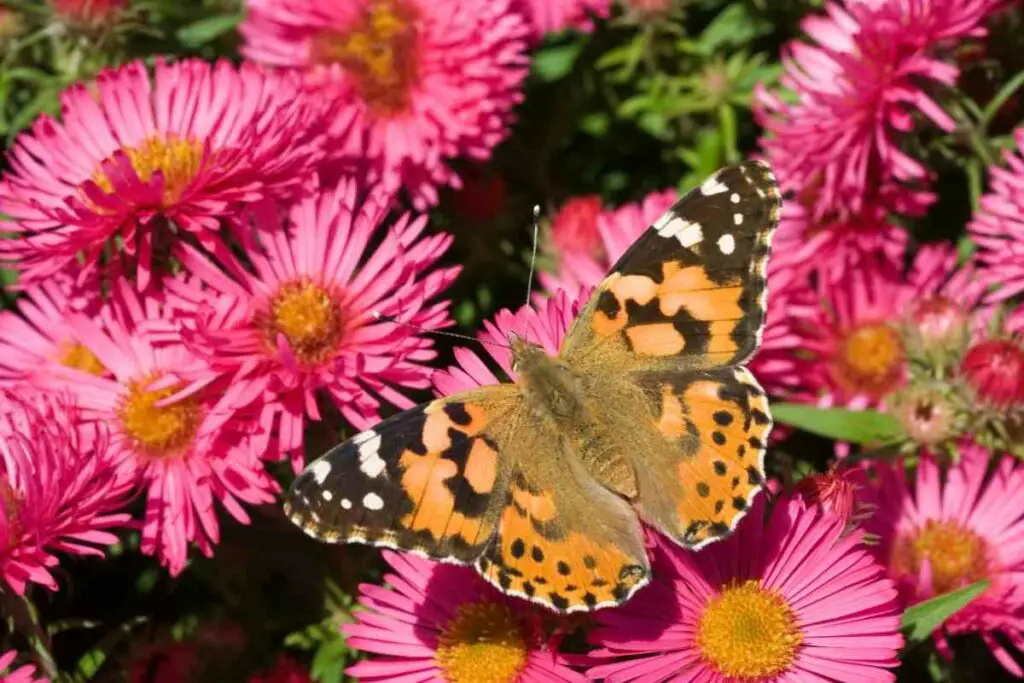
Table of Contents
How Can I Identify The Type Of Butterfly In My Garden?
Each of these common types of butterflies you may find in your garden can be identified as follows:
1. Red Admiral
Are Black wings with a wide red stripe on each. White spots close to the tips of the forewings.
Red Admirals are distinctive and can be found in all habitat types across Britain and Ireland. This butterfly is large and strong with a wingspan of up to 67 – 72mm depending on gender.
A Red Admirals can live up to 10 months but this is dependent on seasonal changes as the butterfly struggles to survive the British winter.
2. Peacock
Dark red wings with black markings. Blue spots on each wing resemble an eye; similar in color to a peacock’s tail.
Due to the Peacock’s beautiful colors and patterns resembling and a Peacock’s tail that’s how the name stuck. These colors and patterns are used to startle and confuse predators.
Most commonly in many types of butterfly species, the female is bigger than the male with a wingspan of up to 60 – 70mm.
The Peacock butterfly can live up to 11 months.
3. Small Tortoiseshell
Orangey-red wings, Black and yellow markings on the forewings, White spots on each forewing.
This beautiful species is a medium-sized butterfly with a wingspan of 50 – 56mm depending on gender. It’s also known for Small Tortoiseshells to be found in large groups.
The Small Tortoiseshell is one of the widespread species of butterfly, making it the most familiar butterfly around the country.
Small tortoiseshells have a life span of 9 months. New Borns will hibernate throughout winter and reawake in spring.
4. Painted Lady
Orange wings with black tips and white spots on the forewings.
This species is commonly found throughout Britain and Ireland but migrates south for the winter to find warmer climates.
Painted ladies have a wingspan of up to 4 – 5cm and are part of the Nymphalids.
5. Small White
White wings and grey tips on the forewings. Females have a black spot or two on each forewing. Undersides are plain and cream-colored.
Small Whites are part of the Whites and Yellows family. The Small Whites stand out in most garden habitats and are most commonly found near cabbage patches.
In proportion to other butterflies, Its medium size with a wingspan of 48mm is dependent on gender.
6. Large White
White wings and black tips on the forewings. Females will have a black dash mark and two black spots on each forewing. Undersides are plain and cream-colored.
Very similar to the Small Whites but like stated in the name much larger with a wingspan ranging from 63mm – 70mm depending on gender.
Large Whites with the correct nutrition live for 30days.
7. Green-veined White
White wings, dark grey tips with one or two black spots on each forewing. The underside is adorned with greyish green stripes.
The Green-veined White is also very similar to the Small Whites as they are also part of the Whites and Yellows family. It’s a very common species and can be found in most vegetable patches but can also be seen in meadows and woodland areas.
Its wingspan can reach up to 50mm dependent on its gender.
8. Orange-tip
Female Orange-tips have white wings with dark grey tips on each wing and their underside are greyish green.
Females lay pale white eggs underside flower buds and their eggs are noticeable due to them changing into a bright orange color after a few days.
Males have white wings with stark orange patches on each forewing. Wingtips are light grey and their underside is greyish green.
Both genders are very common throughout the UK and can be seen throughout April to July.
Orange-tips are part of the Whites and Yellows family.
Female and Male Orange-tips wingspan can range from 45mm – 50mm.
9. Small Copper
Forewings: Orange with brown spots, and a dark brown border lining them.
Hindwings: Dark brown and rimmed in orange.
Males are very aggressive toward other insects and can be very territorial. After chasing off other insects they can be found returning to the same spot and waiting for a female to pass.
Part of the copper family the species have dropped in numbers over the past year but can still be found in a wide range of habitats from back gardens to wastelands but most commonly in warm, dry conditions.
This small butterfly’s wingspan ranges from 32mm – 35mm dependent on gender.
10. Meadow Brown
Brown wings faded orange spots on the forewings. Each forewing has a black mark resembling an eye with a white pupil.
Meadow browns are widely studied for many years and can be found in near enough all habitats sometimes in very large groups.
This species can be found throughout the UK and Ireland. Commonly Meadow browns are found to be larger throughout Ireland. Wingspan range between 50mm – 55mm dependent on gender.
11. Holly Blue
Light blue wings, females’ wings are trimmed with black. The undersides are silvery with black spots.
This small and beautiful butterfly is easily spotted in small gardens. The Holly blue tends to fly high unlike other types in its family tends to stay low.
It is part of the Blues family and the Holly blue is the most common in its family.
This small butterfly’s wingspan only reaches a maximum of 35mm smaller depending on gender.
12. Common Blue
Females: Brown with blue. The undersides have orange spots.
Female Common blues appearance varies depending on which area is seen. South English common blues are commonly brown but some females have been sighted in western Ireland to be almost completely blue.
Males: Bright blue wings and wings are rimmed with brown and white. The undersides have orange spots.
Common blues are widespread and commonly found in small gardens, throughout the summer, especially in sunny shelters. Unfortunately, their number has slowly been decreasing over the past year.
Its wingspan ranges up to 35mm depending on its gender and is part of the Blues family.
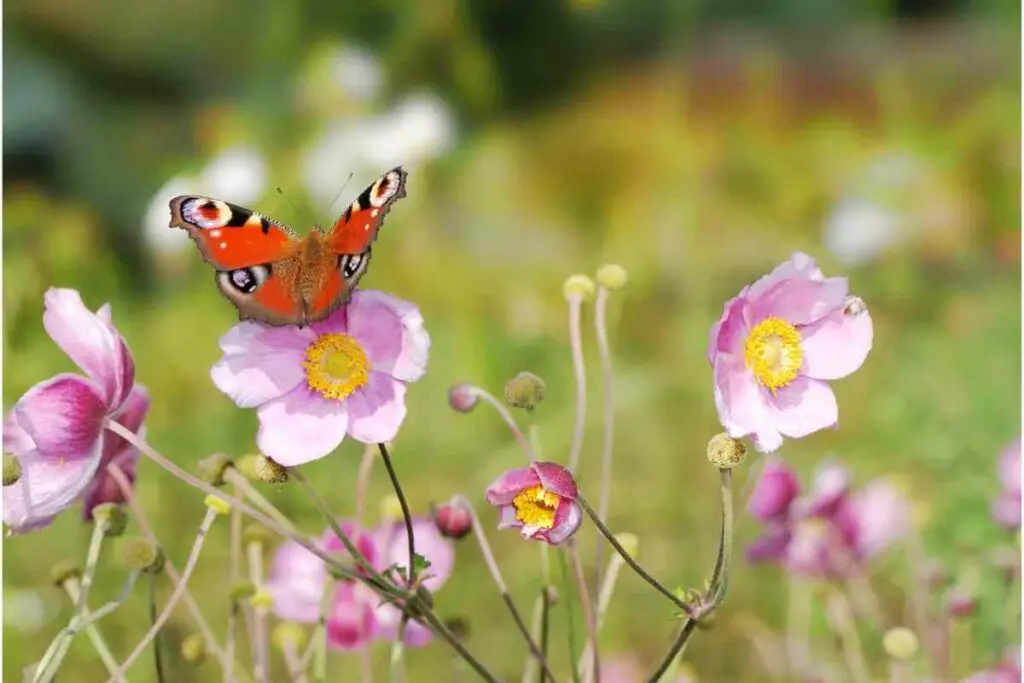
Why Should I Want To See Butterflies In My Garden?
Apart from their beauty, butterflies also pollinate the plants in your garden. The pollination process is integral in the plant reproduction cycle. Without pollination, our agricultural food systems would be in jeopardy.
Will Butterflies Help Keep Aphids Out Of My Garden?
While butterflies won’t eat aphids per se, caterpillars have been known to. Thus, hosting butterflies in your small garden can come full circle in helping keep more intrusive insects at bay.
A healthy environment for the butterfly with plants they enjoy could mean they’ll lay eggs nearby, and the caterpillars will return the favor.
What Plants Do Butterflies Like Best?
Simply having a small garden isn’t enough to entice the butterflies to visit. They do have some preferences. Here are a few examples:
Buddleia
This plant is also known as a “butterfly bush”. It offers a healthy supply of nectar, which entices many butterfly species. For a smaller garden, a “buddleia buzz” might be a better option.
English Lavender
Another great source of nectar, English lavender’s aromatic nature calls to the butterflies and other pollinators.
Common Lilac
Also nectar-rich, this medium-sized shrub can be easily accommodated in a small garden. If you’d like to double-down on attracting butterflies, try deadheading the lilac (or removing dead flowers).
Common Honeysuckle
Honeysuckle can take up a lot of space, but its intense fragrance attracts many butterflies as well as moths.
Stinging Nettles
Stinging nettles are integral for butterfly caterpillars. Not feeding the caterpillars would mean they can’t grow and develop into butterflies, so these are crucial to the butterfly ecosystem.
Grass
While not nectar-producing, long-growing grasses are a key part of the ideal butterfly habitat. Many will lay their eggs in grasses as well.
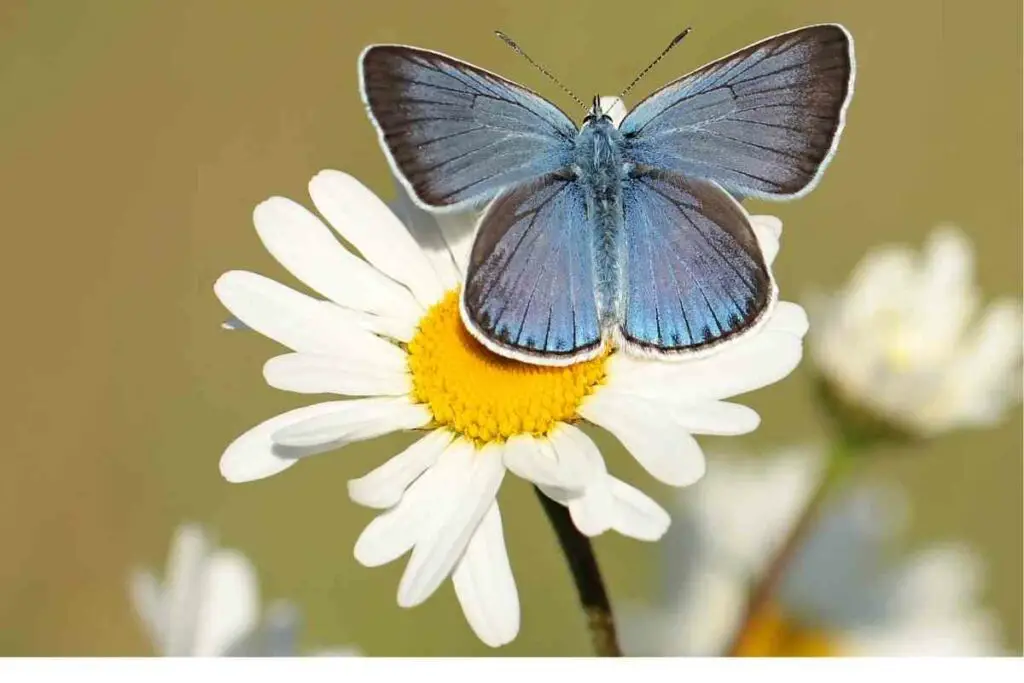
Can My Garden Help Keep Butterfly Species Alive?
Not only can your garden keep butterfly species alive, gardens all over are crucial to this endeavor. As noted above, plants are important for all stages of butterfly development. If you’d like to do more, consider installing a butterfly house in your garden.
Should I Install A Butterfly House In My Garden?
Butterflies need a place to rest and hide from predators and inclement weather. Butterfly houses are built with a similar concept to birdhouses. They are made to resemble tree bark and are built with a wooden structure.
Narrow slits would be made for butterflies to get in and out. You can also leave food for them—overripe fruit, for example. Ensure there is a branch or something for them to perch on while they stay.
Protecting them from danger when possible will help encourage their longevity and continued visitation to your garden!
Why Is It Important To Help Butterflies?
Most species of butterflies are in drastic decline. Some are critically endangered; others are generally endangered or nearing it. There are no species that are currently safe and/or increasing in numbers.
It’s been noted that since the 1970s, there has been a 70% decline in the occurrence of butterflies. Part of the cause for this rapid decline is the destruction of butterflies’ natural habitats. We owe them the duty of fostering their continued existence.
What Can I Do If I Don’t See Butterflies Coming To My Garden?
Don’t despair. There are other things you can do to attract butterflies and let them back to your garden. Multiple small gardens could help this; even a window box or something similar in a few places. If you make flora choices based on the above-noted options, you’ll be doing all you can to offer your nectar sources to the butterflies.
Spreading the word about the danger butterflies face will also go a long way. Encourage your neighbors to consider creating butterfly gardens of their own, or installing butterfly houses. A lack of action could mean that these commonly spotted garden butterflies won’t be common for much longer.
If butterflies ain’t attracted to your garden there are other insect species that might be. Bees are extremely popular and are also helpful in pollination. Check out Why Insect Houses Are Beneficial to Gardens.
Conclusion
What butterfly is in your garden?
Most commonly found in small gardens are; Red admiral, Peacock, Small tortoiseshell, Painted lady, Small white, Large white, Green-veined white, Orange-tip, Small copper, Meadow brown, Holly blue, Common blue.
Protecting butterflies is extremely important as many of the species are drastically declining in numbers every year in building your own or installing a butterfly house can be a great idea to protect butterflies in your garden.
“Ezoic Verification 46227”









